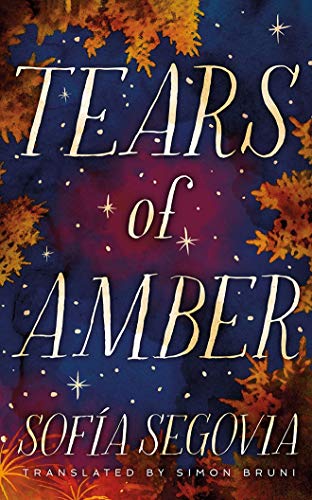Tears of Amber
On 25 March 1938 in the East Prussian city of Königsberg, Adolf Hitler makes a vital speech about Austria’s annexation, but little Ilse Hahlbrock and Arno Schipper don’t hear it. Yet, the events that follow affect their lives severely. Soon Germany invades neighboring Poland, and a Polish prisoner, teenaged Janusz, is assigned to work on Ilse’s family farm. Both Ilse’s and Arno’s fathers are conscripted by the Germans and sent off to war. Their wives are left alone to care for their children. Later, when the Russian army starts attacking Poland, putting the Germans in retreat, Ilse and Arno’s families flee for their safety. Janusz decides to accompany Ilse and her family on their trek. They escape into the forest. Janusz tells Ilse fairy tales of a Baltic queen whose tears had turned into amber to ease Ilse’s mind. Both families face appalling hardships during the war. Janusz’s stories prove to be prophetic.
In the author’s note, Sofía Segovia mentions that this story is “inspired by real events” as told to her by Germans in her hometown of Monterrey, Mexico. Segovia also notes that she attaches more importance to the experiences of people who “don’t feature in history books.” Hence, the characters of this novel are mostly women and children. Since it was initially written for Spanish readers, there is much telling of the characters’ thoughts and actions, typical in European literature. The novel provides thought-provoking information on the demise of the Prussian state. The numerous flashbacks and even flash-forwards require careful reading to stay with the storyline. Interestingly, the famous real-life Aleksander Solzhenitsyn, who was imprisoned for criticizing the violence against Prussian civilians, makes an appearance in the novel. The story continues after the ending of WWII for, as Segovia says, history never ends.










